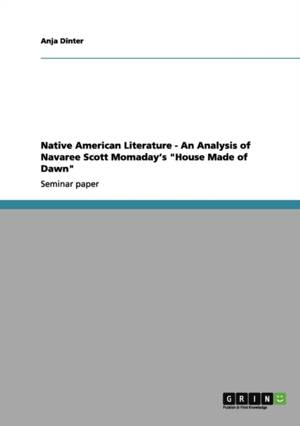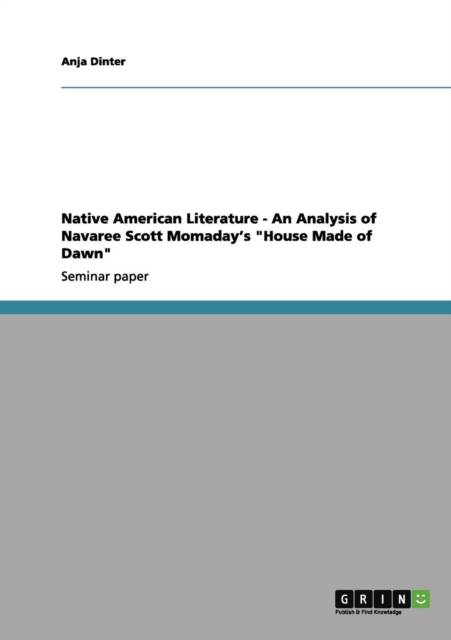
- Afhalen na 1 uur in een winkel met voorraad
- Gratis thuislevering in België vanaf € 30
- Ruim aanbod met 7 miljoen producten
- Afhalen na 1 uur in een winkel met voorraad
- Gratis thuislevering in België vanaf € 30
- Ruim aanbod met 7 miljoen producten
Zoeken
Native American Literature - An Analysis of Navaree Scott Momaday's "House Made of Dawn"
Anja Dinter
Paperback | Engels
€ 26,45
+ 52 punten
Omschrijving
Seminar paper from the year 2001 in the subject American Studies - Culture and Applied Geography, grade: 1,3, University of Potsdam (Institut für Anglistik und Amerikanistik), course: How Race Is Lived in America, language: English, abstract: Introduction The novel House Made of Dawn, first published in 1968, was awarded a Pulitzer Prize in 1969. With the incorporation of Native materials into the Anglo-American novel Momaday introduced the Native American Renaissance at the end of the 1960s. And, indeed, as one of the first contemporary Native American writers Momaday employs on the one hand traditional oral tales, fragments of poetry and historical documents. On the other hand House Made of Dawn illustrates his "Western" fascination with structure, a literary device almost absent in oral storytelling or traditional Native American literature. The novel makes use of multiple points of view, stream-of-consciousness techniques, sudden changes of time and chronology, which are primarily achieved by flashbacks and flashforwards. Momaday's delight in imagery, especially of nature, reflect his study of Romantics' and Symbolists' work. The book's content, as well as that of other works by the author, is a reflection of Momaday's personal identity and the various cultural traditions that shaped it. The following literary analysis will therefore focus on the embedding of aspects of Momaday's identity and try to explain some of the cultural elements interwoven in the story. As the author repeatedly employs autobiographical materials, a short representation of his past seems indispensable. Due to the designated size of this paper, a detailed analysis of all interesting and noteworthy aspects seems impossible. Also, with regard to the interrelatedness of form and content, there won't be subdivisions separated by headlines within the analysis.
Specificaties
Betrokkenen
- Auteur(s):
- Uitgeverij:
Inhoud
- Aantal bladzijden:
- 52
- Taal:
- Engels
Eigenschappen
- Productcode (EAN):
- 9783656205739
- Verschijningsdatum:
- 3/06/2012
- Uitvoering:
- Paperback
- Formaat:
- Trade paperback (VS)
- Afmetingen:
- 148 mm x 210 mm
- Gewicht:
- 81 g

Alleen bij Standaard Boekhandel
+ 52 punten op je klantenkaart van Standaard Boekhandel
Beoordelingen
We publiceren alleen reviews die voldoen aan de voorwaarden voor reviews. Bekijk onze voorwaarden voor reviews.








